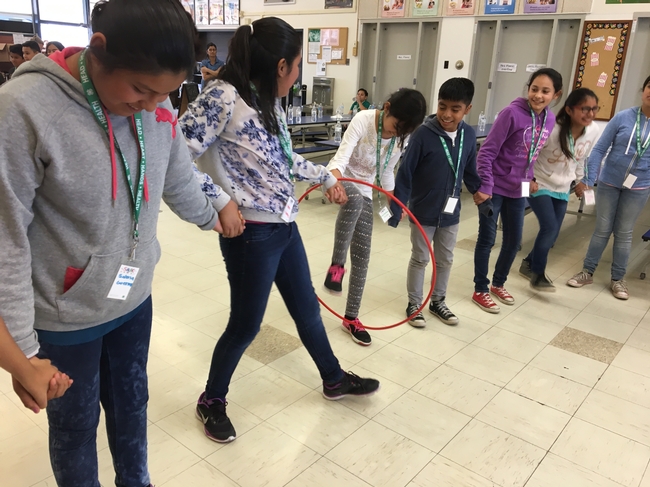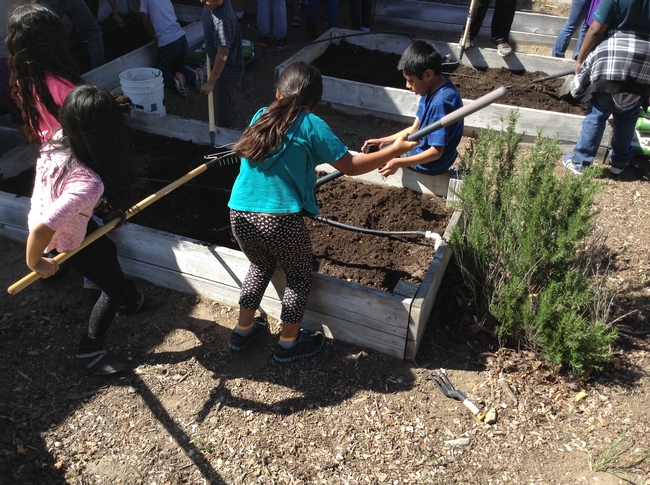Why I'm the cupcake police
Put yourself for a minute in some kid-sized shoes. Let's call you Maggie. You are in third grade. Your dad works full time and he picked you up from the afterschool program at 6:00 p.m. You and dad got home about 7:00 p.m. because you had to stop by QuikMart to pick up something for dinner and put a little gas in the car. When you got home dad cooked the frozen pizza and you sat down to eat and drink your soda around 7:30 p.m. By the time you finished eating, took your shower, helped dad clean-up and got in bed it was 8:45 p.m.
In the morning you hurry to put your clothes on, brush your hair, brush your teeth and get everything in your school bag for the day. Dad needs to drop you off at school at 7:30 a.m. so he can get to work on time. You grab a bag of chips as you run out the door, rubbing your eyes and looking to make sure you didn't put your shirt on backwards again.
Somewhere around 10:00 a.m. your tummy starts to growl. You feel your mouth start to water a little and your eyes droop. Looking at the clock you count the minutes until lunch. At 11:25 , one of your classmate's parents comes in with a tray of cupcakes to celebrate her birthday! Your stomach jumps at the sight of pink butter cream frosting piled high on the little cakes. Your teacher hands one to each student in the class and you savor every delicious bite.
Fifteen minutes later the lunch bell rings. Your teacher walks everyone over to the cafeteria and you get in line for school lunch. You feel embarrassed to eat school lunch and since you ate that cupcake you're not really hungry anyway. You plop a few things on your plate making a face. Sitting down you pick at the food until the custodian says you can get up and go play. You dump your tray with most of the food still on it and run outside chasing your friends onto the blacktop.
Back in class you feel energized after your game of handball. Your face is red and you're a little sweaty from all the running around. Your teacher announces that your group won the weekly contest and each of you will get to pick from the candy bag. That sounds great to you because you are starting to get hungry again. You put a few pieces of candy in your mouth. You get back to work on your math problem but it's the afternoon and you always have trouble concentrating in the afternoon…
Maggie is just one of more than 30 million children in the U.S. who qualify for free or reduced-price school meals through the USDA school meal program. Students like Maggie may rely on food at school for up to 50 percent of their daily calories and school meals represent a larger portion of the school-day caloric and nutrient intake for food insecure children. In addition, research shows that income level, educational attainment and family composition impact diet quality and physical activity.
The national school lunch program, while not perfect, is intended to ensure students like Maggie are offered a variety of fruits and vegetables and whole-grain rich foods every day. There are limits to the amount of sodium, saturated fat, trans-fat and calories that are offered as part of a school meal. Studies have shown that child nutrition programs improve diet quality and academic performance for children in low-income and food-insecure households.[1]
When we offer our children and students food with little to no nutritional quality for a reward and cupcakes to celebrate a birthday, we are impacting their overall dietary quality for the day. For Maggie, the problem is compounded by the fact that she does not have access to a varied and nutritious diet at home. She has nothing to fall back on when she doesn't get a nutritious meal at school and she fills up on empty calories instead. Childhood is an important time when people develop lifelong eating and physical activity patterns.
So when I am faced with the dilemma, once again, of speaking up and being the cupcake police or staying silent and going along with treats at school, I think of Maggie.
What can you do to create healthier schools for all children:
- Look up your School Wellness Policy. Every school that participates in the School Meal Program has one. However, many times they were written and never revisited. Check your district web page or go to the Dairy Council finder. School Wellness Policies outline what is and is not allowed to be offered in the classroom or fundraisers during school.
- Offer non-food rewards for positive behaviors: Extra physical activity time or recess, the opportunity to eat lunch in the cafeteria with the teacher, special privileges like “line leader” for the day, or the opportunity to go out to the garden. For more healthy reward ideas visit Healthy Food Choices in Schools.
- Celebrations that reinforce health: Include physical activity like a dance party in your celebration (see GoNoodle for all kinds of fun activities and brain breaks), ask parents to bring in a donated book for the class instead of cupcakes (see Books for Birthdays), if you are going to have food, make sure non-nutritious items are limited to one per student.
- Eat lunch with your student(s): If you're a parent, check-in with your school. Many schools allow parents to eat lunch with their children if notified in advance. If you're a teacher, eating with your students is a great way to teach and model healthy eating behaviors. Interested in learning more about the importance of school meals? Find out here.
- Is the school offering a variety of fruits and vegetables? Can the students all see the food and serve it safely? Are any local foods available? If not, set a meeting with the Food Service staff to discuss your ideas and see how you can help.
[1] https://www.ers.usda.gov/webdocs/publications/84003/eib-174_summary.pdf?v=42905





Posted by Natalie M Price on February 21, 2018 at 12:15 PM